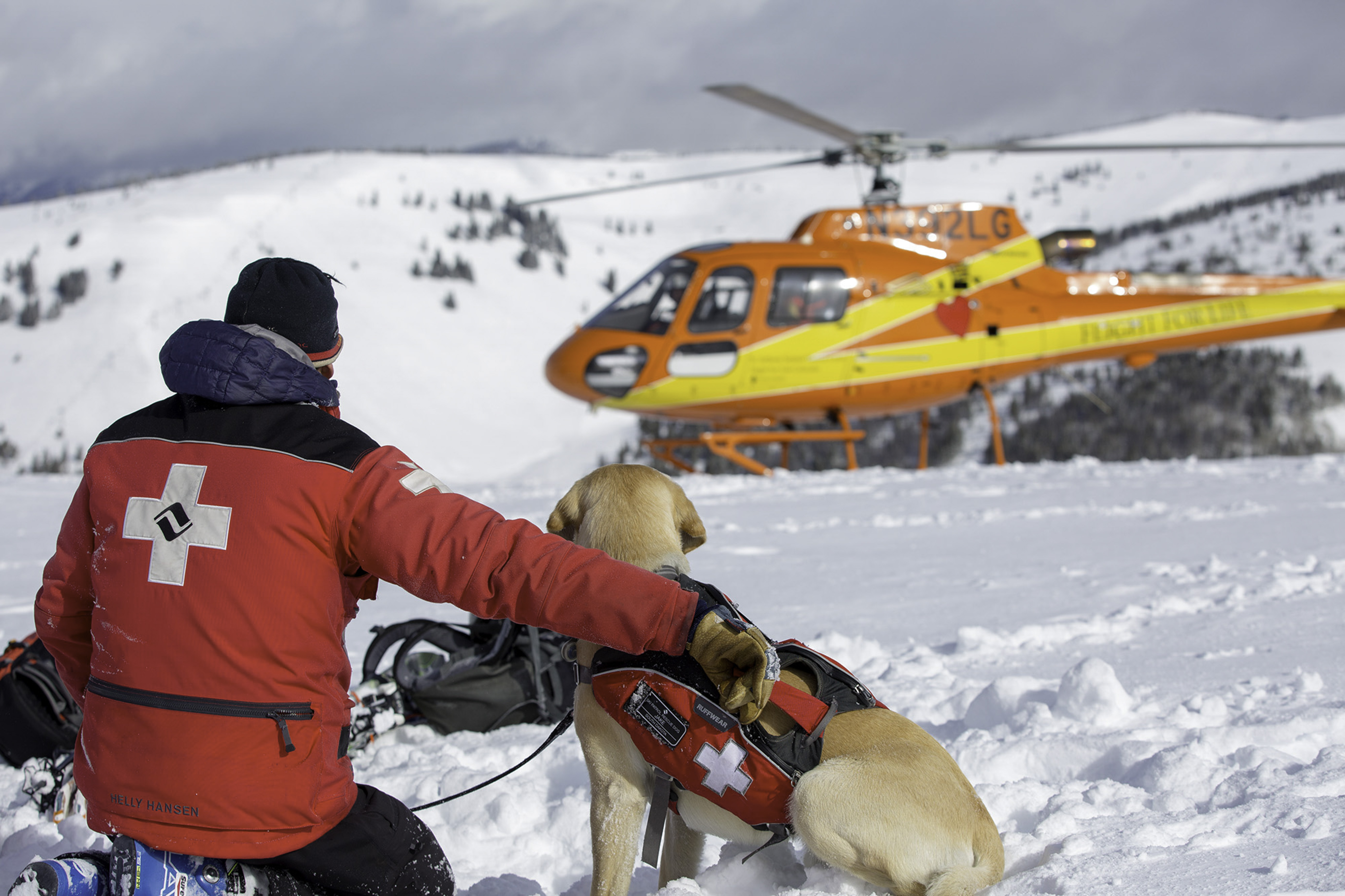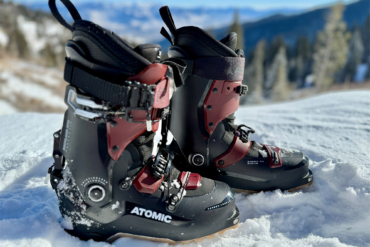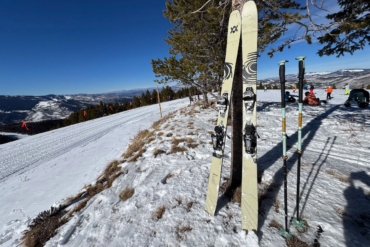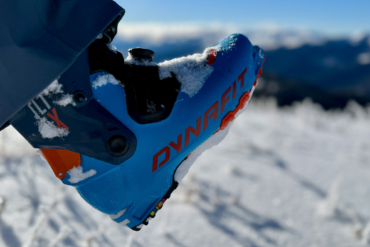[leadin]Riding a bike through snow and winter’s cold is becoming common for hard-cores and casual cyclists alike. We asked a group of experts for tips on how to ride safe, comfortable, and warm through the winter months.[/leadin]

We corralled a panel of winter-biking experts from Minnesota-based Quality Bicycle Products to compile 20 tips and “hacks” to make your winter riding safer, faster, and more efficient.
Quality Bicycle Products is a major bike-parts distributor and it also owns brands including Surly Bikes, Salsa Cycles, 45Nrth, All-City, and more.

Our winter-biking expert panel included Dave Gray (Industrial Designer, Surly Bikes); Paul Zeigle (Brand Manager, Surly Bikes); Ryan Horkey (Product Manager, MSW); Michael Groskreutz (Project Manager, Pedal iSSi); Amy Kippley (Product Manager, Surly Bikes); and Matt Reeve (Customer Service Agent for QBP).
They all live, and bike-commute 10 to 20 miles a day, in the Twin Cities area of Minnesota, where winters are downright frigid.
Whether you commute in the city or pursue snowy singletrack on a fat bike, follow their advice to help maximize your time out there on two wheels this winter.
Bag Your Feet
It may sound suspect, but simple plastic bags can serve as vapor barriers on the feet, meaning a non-permeable and wind-proof barrier that will trap in heat. On the coldest days, Surly’s Dave Gray wears thin wool socks, then pulls a plastic bag on, before adding a final thicker sock on top. This three-layer system keeps his feet warm in below-zero temps. (Caveat: the bags have zero breathability, meaning sweat from the feet cannot escape.) Gray has used this system for years, including for city commuting as well as on wilderness bike races like the infamous Arrowhead Ultra 135, which he has won and raced in since 2006.
Thin Sheen Of Warmth
Icy winds on the face can be combatted with a thin smear of greasy salve, including the likes of Dermatone, Warm Skin, or Vaseline. Several riders in the group add a light coating to their face before heading out on the coldest days. It adds a layer on top of your skin that cuts the bite of wind and cold.
Spray Your Frame?

Rinse your frame lightly with WD40 or a shield product. A coat of wax or even Pam cooking spray works, according to Surly’s Dave Gray. The sheen of grease or gloss will keep your frame cleaner from grit and spray off the road. Ice cannot build up as easily with these added layers. Caveat: Be careful not to spray your rims or brakes, as a grease treatment will destroy stopping power and is difficult to remove.
Rusty Chains
Stainless steel chains are pricey but will not rust. Or, several companies offer rust-resistant chains for cheaper prices (see the KMC Rust Buster, as one choice).
Fenders & Lights
Two gear upgrades to look at right away, you’ll want a set of fenders to keep road spray to a minimum. Lights — including a solid white light on front and a red blinker on back — are requisite for winter riding, where often you’re less visible or pedaling in the dark.
Need A Winter Bike? Look In Your Garage
You can buy a fat bike or a bicycle made for icy streets and snow. Or, look in your garage at an older model. “Don’t obsess too much, bikes are not that fragile,” said Surly Bikes’ Dave Gray. “Winter does not have to ruin your bike.”
Keep It Clean
Winter bikes get dirty fast. Plan to commit some extra time to wipe down your frame and drivetrain after sloppy days out there. Keep the chain and gears lightly lubed at all times.

Dress Warm (with normal winter-wear)
Most people living in a winter climate will have clothing to keep warm, including jackets, hats, and shell pants. Wear the same gear you use for skiing or sledding if you can’t drop the cash on dedicated winter biking apparel.
Summer Kit Underneath
Don’t want to purchase dedicated winter riding outerwear and apparel? Your summer bike shorts and kit under winter clothes will add padding where needed and layers for warmth.
Cold Hands?
Extremities are a crux when riding in the cold, as they may require special gear and are often the first body parts to get cold. Gloves work to around 10º F for most people, then you need to default to mittens (despite the lack of dexterity for shifting and braking).
Footwear
Special winter-biking shoes are sold by 45NRTH, Mavic, Pearl Izumi, and other brands. But if you cannot afford them switch to flat pedals and wear winter shoes or boots.
Fat Bike Needed?
On snowy days, where the roads are choked and un-plowed, many riders in the group use a fat bike, including models from Surly and Salsa. The big tires better float over ruts and through deeper snow. However, most city riders in the group preferred non-fat bikes on normal winter days when the roads are plowed.
Keep It Frozen
A bike that is subjected to the constant freeze-thaw cycle will degrade faster than one left cold. Keep your bike in a garage or outdoors (preferably under a covered area) as much as possible instead of taking it indoors each night.
Single-Speed, Fixed-Gear
The simple build of a single-speed or fixed-gear bike is preferred by some riders. With less moving parts, there is less to break down, freeze, get clogged, or destroyed.
Eyewear & Goggles
Full ski goggles are popular with some dedicated winter riders. Others wear sunglasses to cut wind and glare. But a surprising number of polled winter riders in our group go eyewear-less. They find eyewear unnecessary and cumbersome. Instead, bundling the face, chin, and neck with hat, scarves, tight hoods, and products like Buffs is enough to stay warm. (The Neck Gaiter from Surly is another great option; it’s made of a soft, two-layer wool fabric.) “Weirdly, eyes don’t get cold,” one in the group noted. Exception: In harsh wind, sleet, or snow, eyewear is a must for visibility.
Go Studs

Carbide tips embedded in tread are a solution — but not a panacea — for staying upright on icy, snowy roads. 45NRTH makes tires like the Xerxes and Gravdal, which GearJunkie has tested and approved over multiple seasons of winter biking.
Or No Studs…
Surprisingly, of the polled QBP winter bikers only a couple rolled with studs. The reason? Winter roads are usually dry, even in places like Minnesota, except for right after a fresh snow. (Studs also add cost and weight, and they are effective only in some scenarios.) Other QBP riders used winter-ready (non-studded) tires like the Michelin StarGrip, while mountain bike or cyclocross tires, sometimes run with a little less pressure than in warm months, were another common rubber solution to conquering the winter road.
Valve Cap On
Road bikers and others often remove their valve caps, which are unnecessary screw-on covers in the warm months. However, keep them on in winter, where ice and grit can get into the valve and corrode or freeze it up, rendering the innertube useless if you get a flat or need to add air.
Get Reflective!
Bike lights are a no-brainer in winter. But less known is the effectiveness of reflective features. Add reflecting stickers and wear clothing (or backpacks) that have reflective properties. Car headlights ignite these surfaces, making riders more visible out there.
Final Tips
Riding on snow, ice, and in winter conditions takes patience, practice, and a more conservative approach. Slow down and be aware of the pavement and the situation all around. Car drivers are less likely to expect a biker in the winter; work to stay visible and bike defensively where needed. On snow, try to keep straight, relax, and do not make sudden changes of speed or direction. Braking on snow and ice is a science, too. In many ways, riding in the cold is easier than perceived, however expect some learning curve as you work to adapt to the winter road.








